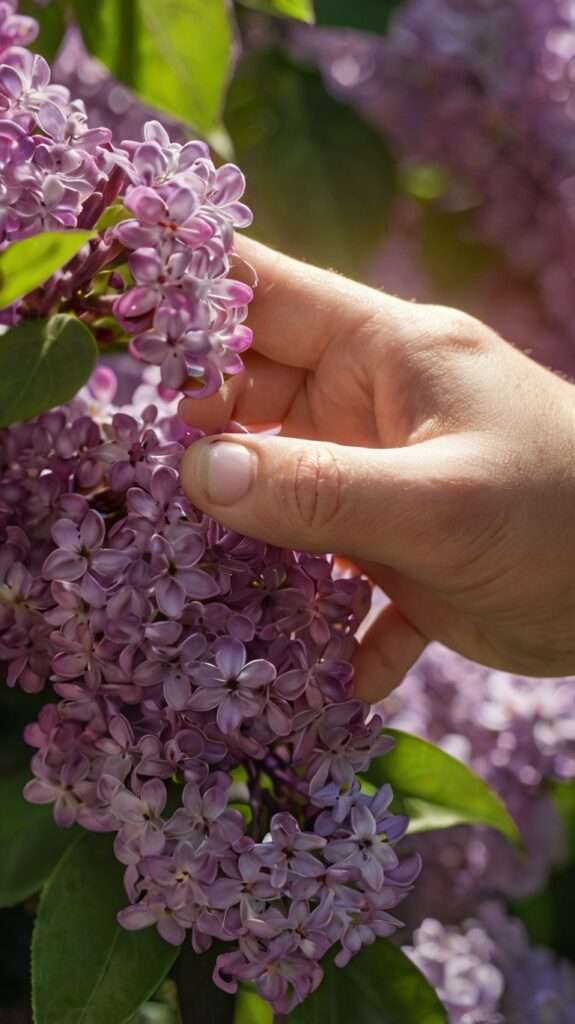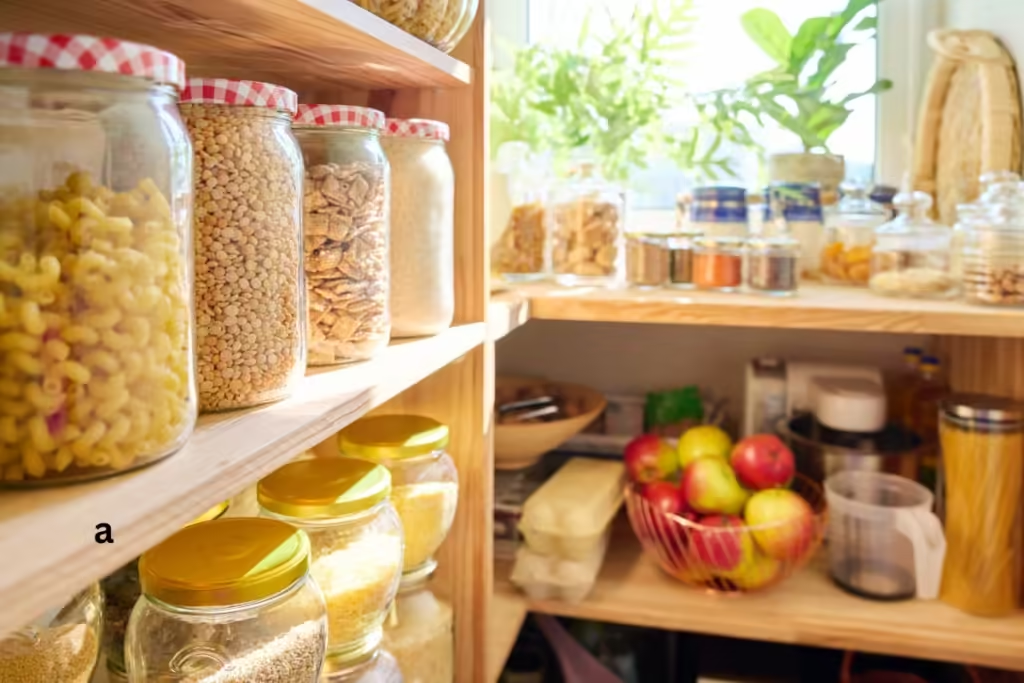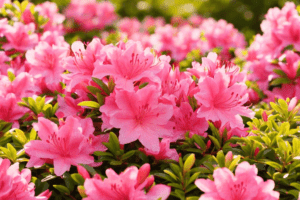
The Magic of Lilacs: A Gardener’s Guide to Springtime Beauty
Step into a world of springtime enchantment with lilacs, those captivating shrubs that herald the arrival of warmer days. Their delicate blooms and intoxicating fragrance are a symphony of beauty and delight, adding a touch of elegance and whimsy to any garden. As a gardener with a passion for all things beautiful, I’ve always been drawn to lilacs, their vibrant hues and heady scent a constant reminder of nature’s artistry.
Understanding
Lilacs are more than just pretty flowers; they’re a sensory experience. Their beauty is undeniable, with a captivating range of colors from classic white to rich pinks, deep purples, and even blues. Imagine stepping into your garden with lilacs in full bloom, their vibrant hues drawing the eye and their fragrance filling the air. But it’s the scent that truly steals the show. The intoxicating fragrance of lilacs is so potent it can fill your entire yard, creating a peaceful, welcoming atmosphere. Picture yourself on a spring evening, enjoying the sweet fragrance of lilacs as the sun sets. Truly a magical experience!
Types of Lilacs
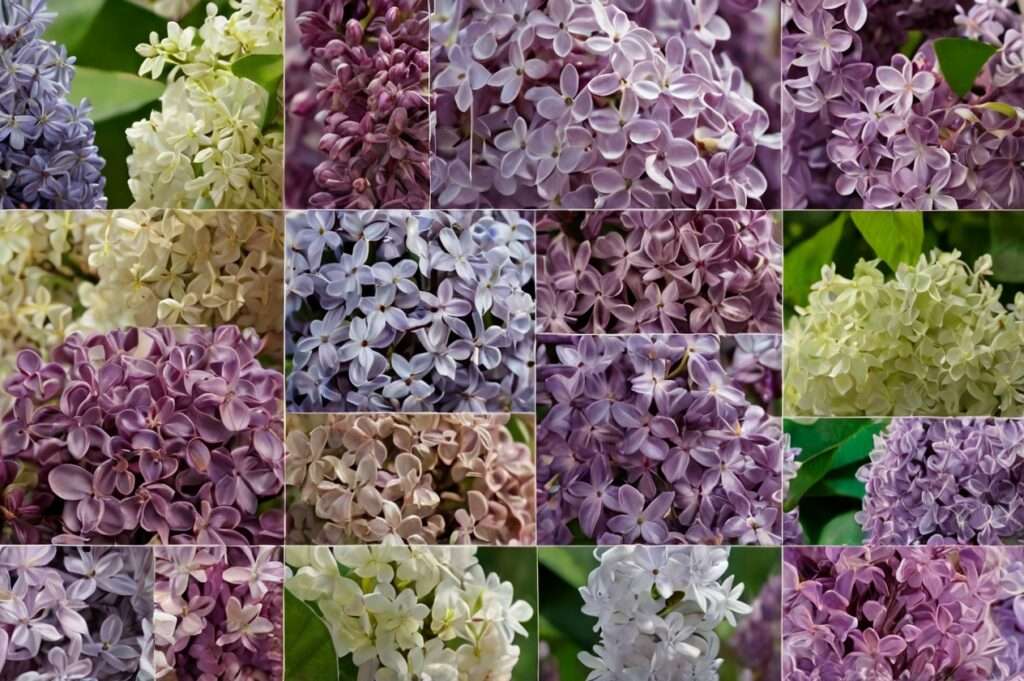
The world of lilacs offers a diverse array of choices, each with its own unique charm. From the classic Common Lilac (Syringa vulgaris) with its large, fragrant flower clusters to the compact, fragrant Miss Kim Lilac (Syringa patula) perfect for smaller gardens, there’s a lilac variety for every taste and space. For a dramatic garden statement, consider the taller, more tree-like Japanese Tree Lilac (Syringa reticulata) with its large white flowers.
Historical Significance
Lilacs have a rich history, symbolizing love, beauty, and new beginnings. They were introduced to Europe from Persia in the 16th century and quickly became a favorite of royalty and gardeners alike. Their enduring popularity speaks to their timeless appeal, a testament to their captivating beauty and fragrance.
Benefits of Growing Lilacs
Beyond their aesthetic allure, lilacs offer numerous benefits for your garden and the environment. They attract beneficial insects like bees and butterflies, supporting a healthy ecosystem and promoting pollination. Lilacs are also relatively easy to care for, making them a perfect choice for both seasoned gardeners and beginners. Their versatility allows them to be used in a variety of landscape settings, from fragrant borders and hedges to striking focal points in mixed flower beds.
You May Also Like:
Planting Lilacs
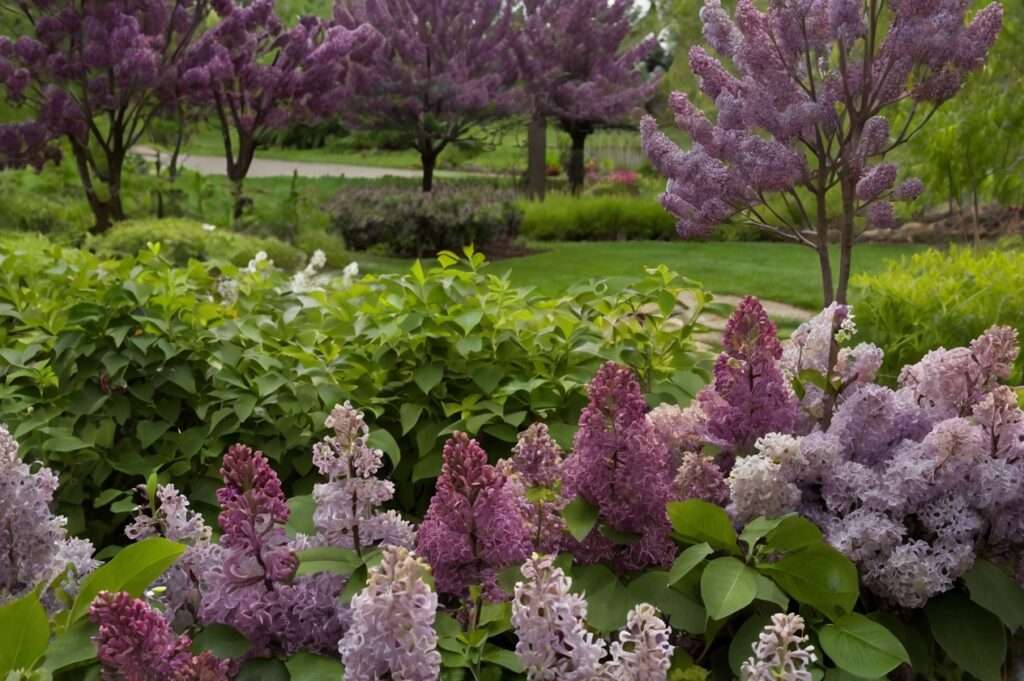
Ready to bring the magic of lilacs into your own garden? Let’s get started!
Choosing the Right Variety
The first step is to select the right lilac variety for your climate and garden space. Consider the mature size of the plant, its bloom color, and its fragrance. Research the best varieties for your region to ensure successful growth.
Ideal Planting Location
Lilacs thrive in full sun, needing at least 6 hours of direct sunlight per day to flourish. They also prefer well-drained, fertile soil, with a pH between 6.0 and 7.0. Choose a location that meets these needs to ensure your lilacs thrive.
Soil Preparation and Planting Techniques
- Prepare the Site: Clear weeds and debris from the planting area to give your lilacs a clean start.
- Dig the Hole: Ensure it’s twice as wide as the root ball and as deep to accommodate the plant’s roots.
- Amend the Soil: Mix in compost or well-rotted manure to improve soil quality and provide essential nutrients.
- Position the Plant: Place the lilac bush slightly above the soil level to prevent waterlogging and promote healthy root development.
- Backfill and Water: Fill in the hole with soil, water thoroughly, and apply mulch to retain moisture and suppress weeds.
Read Also:
Lilac Care Essentials
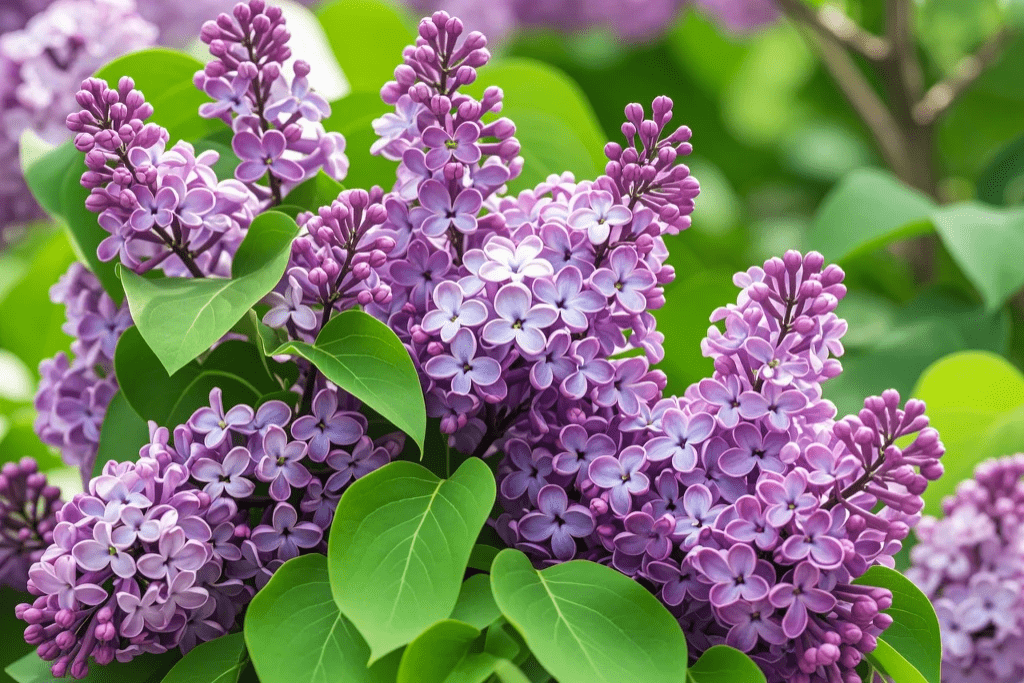
Once you’ve planted your lilacs, it’s time to give them the care they need to thrive.
Watering Requirements
During the first growing season, ensure consistent watering for your lilacs, letting the soil dry slightly between watering sessions. This will help establish a strong root system and promote healthy growth.
Fertilization Tips
Use a balanced fertilizer in early spring, but avoid high-nitrogen fertilizers as they can lead to lush foliage with fewer blooms. A balanced fertilizer will provide the essential nutrients your lilacs need to produce an abundance of beautiful flowers.
Pruning for Healthy Growth
Pruning lilacs helps maintain their shape and ensures healthier growth. It also improves air circulation, reducing the risk of diseases. Prune right after flowering to avoid cutting next year’s buds. Remove any dead or diseased branches to keep your lilacs in top shape.
Common Pests and Diseases
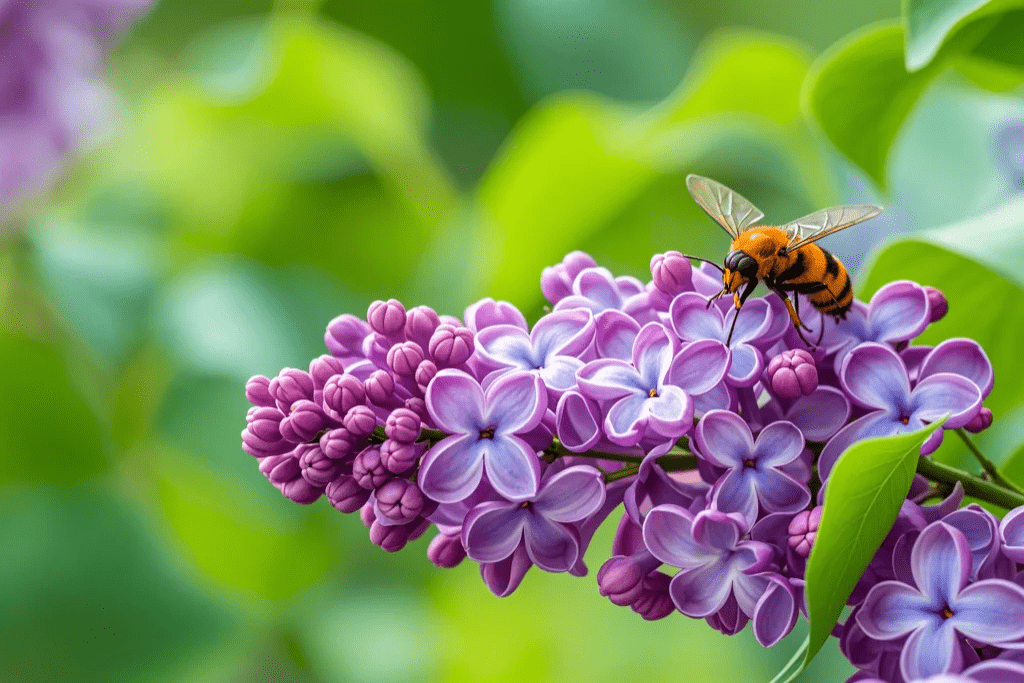
While lilacs are generally easy to grow, they can be affected by certain pests and diseases.
Identifying Common Pests
- Aphids: These tiny insects can cause damage to leaves and stems. Control them with insecticidal soap or by spraying with water.
- Spider Mites: These tiny arachnids can cause damage to leaves, leaving them with a stippled appearance. Increase humidity around your lilacs to deter them.
Preventing Lilac Disease
- Powdery Mildew: This fungal disease can cause a white powdery coating on leaves. Ensure good air circulation and avoid overhead watering.
- Leaf Spot: This fungal disease can cause brown spots on leaves. Remove infected leaves and apply a fungicide if necessary.
Natural and Chemical Treatment Options
There are both natural and chemical treatment options available for dealing with pests and diseases. Always research the best approach for your specific situation and follow label instructions carefully.
Related:
15 Essential Tips for Thriving Philodendron Selloum: A Complete Care Guide
Encouraging Maximum Blooms
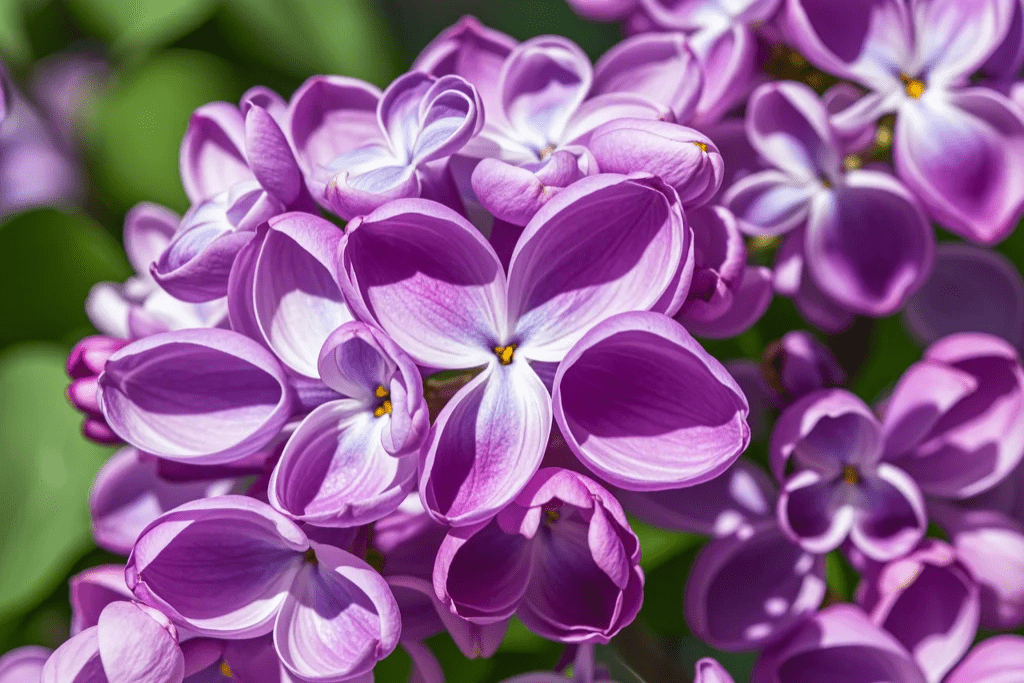
To ensure your lilacs produce an abundance of beautiful blooms, follow these tips:
Ensuring Proper Sunlight
Lilacs need at least 6 hours of direct sunlight per day to thrive. Choose a location that provides ample sunlight to maximize bloom production.
Managing Soil pH Levels
Lilacs prefer a soil pH between 6.0 and 7.0. Test your soil and adjust the pH as needed to create an optimal growing environment.
Addressing Underlying Growth Issues
If your lilacs are not blooming as abundantly as you’d like, there may be an underlying growth issue. Consider factors like soil fertility, watering, and pruning. Addressing these issues can help restore your lilacs to their full blooming potential.
Conclusion
Growing lilacs is a delightful way to add beauty, fragrance, and wildlife support to your garden. With the right care, these resilient shrubs will reward you with breathtaking blooms year after year. So, why wait? Plant your first lilac bush today and enjoy the splendor of nature in your own backyard!
1. When is the best time to plant lilacs?
The best time to plant lilacs is in early spring, after the last frost. This gives the roots time to establish themselves before the summer heat arrives. You can also plant lilacs in the fall, but it’s best to do so in areas with mild winters.
2. How much sunlight do lilacs need?
Lilacs need at least 6 hours of direct sunlight per day to thrive. They prefer a sunny location with well-drained soil.
3. What kind of soil do lilacs prefer?
Lilacs prefer well-drained, fertile soil with a pH between 6.0 and 7.0. If your soil is heavy clay or sandy, amend it with compost or well-rotted manure to improve drainage and fertility.
4. How often should I water my lilacs?
Water your lilacs deeply and regularly, especially during the first growing season. Let the soil dry slightly between waterings to prevent root rot.
5. Should I fertilize my lilacs?
Yes, you can fertilize your lilacs in early spring with a balanced fertilizer. Avoid high-nitrogen fertilizers, as they can promote lush foliage at the expense of blooms.
6. When should I prune my lilacs?
The best time to prune lilacs is right after they finish blooming. This will help maintain their shape, encourage healthy growth, and prevent the removal of next year’s flower buds.
7. What are some common lilac pests and diseases?
Common lilac pests include aphids, spider mites, and borers. Common diseases include powdery mildew, leaf spot, and verticillium wilt.
8. How can I prevent lilac pests and diseases?
You can prevent lilac pests and diseases by ensuring good air circulation, avoiding overhead watering, and removing any diseased or damaged branches.
9. Why aren’t my lilacs blooming?
There are several reasons why your lilacs might not be blooming, including insufficient sunlight, poor soil drainage, over-fertilization, or improper pruning.
10. How can I encourage my lilacs to bloom more?
To encourage more blooms, ensure your lilacs are planted in a sunny location with well-drained soil. Prune them properly after flowering, and fertilize them with a balanced fertilizer in early spring.
References
- The Old Farmer’s Almanac – Offers expert gardening advice, including detailed information about lilacs, planting techniques, and care.
- Website: The Old Farmer’s Almanac
- Missouri Botanical Garden – A trusted resource for plant species information and gardening tips. They provide comprehensive details on different varieties of lilacs and their care.
- Website: Missouri Botanical Garden
- The Spruce – A well-known home and garden site that provides thorough guides on lilac planting, care, pruning, and pest control.
- Website: The Spruce – Lilacs
- Royal Horticultural Society (RHS) – One of the most reputable sources for gardening information, including lilac varieties, planting advice, and care tips.
- Website: Royal Horticultural Society
- Fine Gardening – A respected gardening publication with practical tips and in-depth articles about growing lilacs and other ornamental shrubs.
- Website: Fine Gardening

